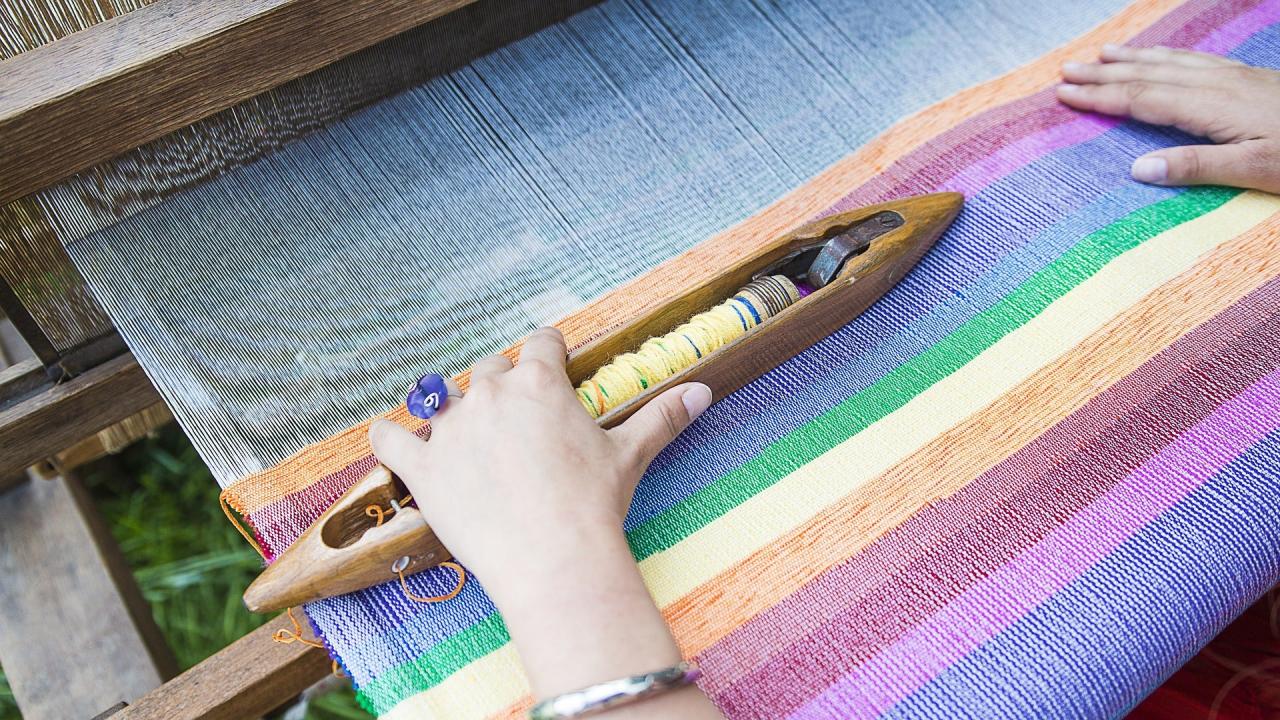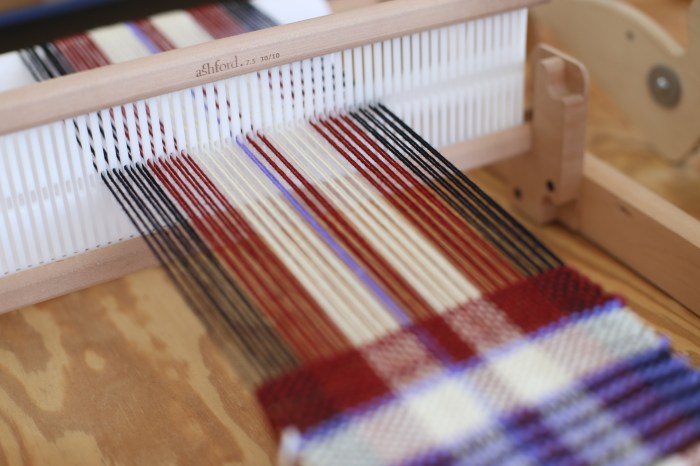Which activity is involved in creating a traditional navajo weaving – The intricate art of traditional Navajo weaving is a testament to the rich cultural heritage of the Navajo people. This activity, deeply rooted in tradition and symbolism, involves a meticulous process that requires skill, patience, and a deep understanding of Navajo culture.
From the gathering of raw materials to the final intricate designs, each step in the weaving process holds cultural significance. The tools and techniques employed, the colors and patterns chosen, and the contemporary influences that shape the art form all contribute to the unique and captivating nature of Navajo weaving.
Tools and Materials

Creating a traditional Navajo weaving requires a specific set of tools and materials:
- Loom:A frame that holds the warp threads taut and allows the weaver to create the weft.
- Warp threads:Long, vertical threads that form the foundation of the weaving.
- Weft threads:Horizontal threads that are woven over and under the warp threads to create the design.
- Shuttle:A small tool used to carry the weft thread across the loom.
- Beating stick:A flat tool used to pack down the weft threads and create a tight, even weave.
- Yarn:Traditionally made from wool, yarn is used for both the warp and weft threads.
Weaving Techniques

Navajo weaving employs several basic techniques:
Plain weave
The simplest weave, where the weft threads alternate over and under the warp threads.
Twill weave, Which activity is involved in creating a traditional navajo weaving
A more complex weave that creates diagonal lines by shifting the weft threads one or more warp threads each row.
Satin weave
A weave that produces a smooth, lustrous surface by floating the weft threads over several warp threads.
Brocade weave
A technique that involves weaving additional weft threads into the design to create raised patterns.
Color and Design

Color and design play a significant role in Navajo weaving:
Color symbolism
Different colors hold specific meanings in Navajo culture, such as blue (water), yellow (sun), and white (purity).
Geometric patterns
Navajo weaving often features geometric patterns that represent natural elements, such as mountains, rainbows, and lightning.
Design motifs
Common motifs include the “eye dazzler” (a zigzag pattern), the “diamond” (representing the sun), and the “arrow” (representing protection).
Contemporary Navajo Weaving

While traditional techniques remain fundamental, contemporary Navajo weaving has evolved in recent years:
Modern materials
Weavers now use a wider range of materials, including acrylic yarn, silk, and even metal.
Contemporary designs
Artists are incorporating modern design elements, such as abstract patterns and non-traditional colors.
Innovative techniques
Some weavers are experimenting with new techniques, such as using multiple looms or weaving in three dimensions.
Question & Answer Hub: Which Activity Is Involved In Creating A Traditional Navajo Weaving
What is the primary material used in traditional Navajo weaving?
The primary material used in traditional Navajo weaving is wool from Churro sheep, known for its soft and durable qualities.
What is the significance of the colors and patterns used in Navajo weaving?
The colors and patterns used in Navajo weaving hold deep cultural and symbolic meanings. Red represents strength and protection, black represents fertility and the night sky, and white represents purity and clouds. Patterns often depict traditional Navajo motifs such as geometric designs, animals, and natural elements.
How has traditional Navajo weaving evolved in contemporary times?
Contemporary Navajo weavers continue to uphold traditional techniques while incorporating modern materials and designs. They experiment with new color combinations, textures, and patterns, resulting in a vibrant and evolving art form that reflects both tradition and innovation.